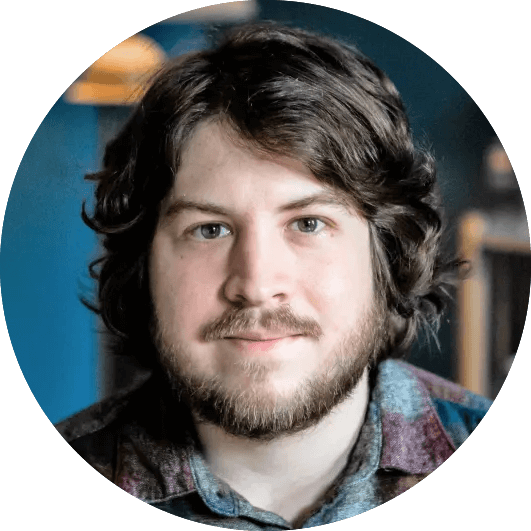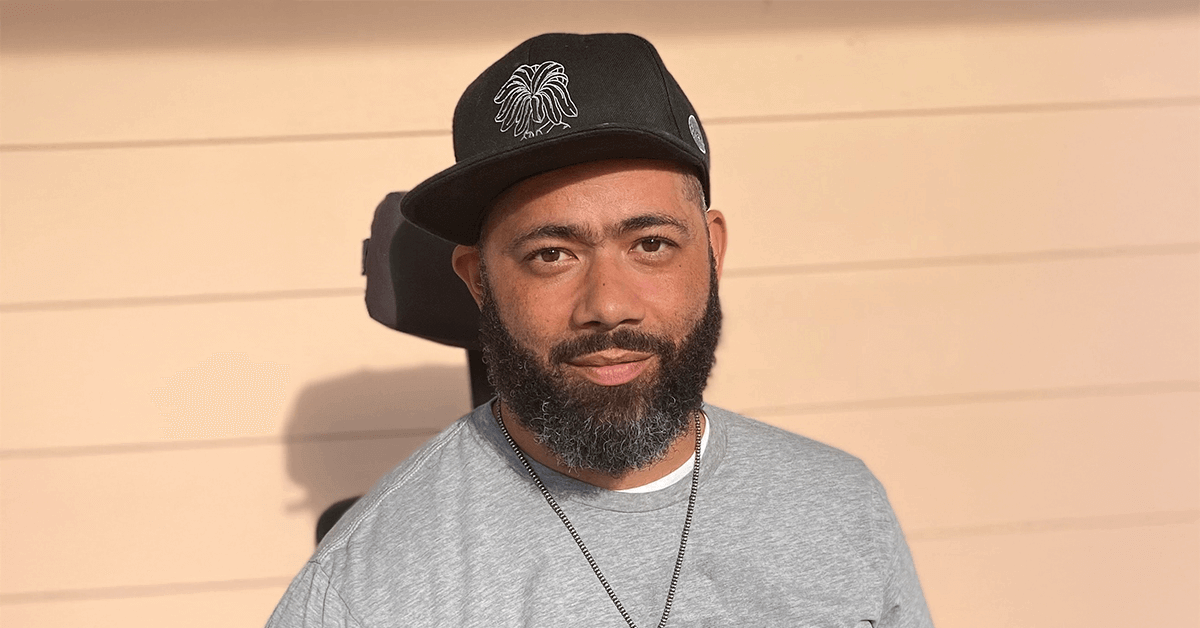Discover how sound designer David Jeffers blends curiosity, resourcefulness, and community into a thriving career.
David Jeffers is a sound designer, disability advocate, and the subject of a new documentary called Quad Life. The film chronicles Jeffers’ life after a spinal injury in 2011 resulted in a case of C5/C6 ASIA B quadriplegia, turning his world upside down and reframing his relationships with his family and career.
After a long period of recovery and adjustment, Jeffers’ longtime friend Ricardo Roberts (who is also the co-founder of Bien, the studio behind the film) encouraged him to pursue a career in sound design. With the help of a mentor and a background in music production, Jeffers quickly learned his way around Ableton Live and Pro Tools, began working with Bien, and eventually started his own business, Quadriphonic Sound.
With Quad Life set to enter the festival circuit later this year, we spoke with Jeffers about navigating his new career in sound design, the role of supportive friends and mentors, and keeping his promise of being an active father to his two sons.
How did the idea for Quad Life come to be?
David Jeffers: Ricardo from Bien has been my best friend for over 35 years. His studio does motion design and animation work, but they wanted to get into live action, and it just felt like I had a good story to tell. We’ve got good working chemistry, so he said, “You know what? Let's go for it.” The process probably started about three years ago.
You can see the obvious, tangible parts about me overcoming and becoming a sound designer; but a really big, overarching concept of the film is about community, family, and friends. Without that, I would not be here. I mean, honestly – I might not even be alive, you know what I mean? But I have a friend of 35 years and we're now doing business together again. That’s something I'm super grateful for.
In the film, you credit Ricardo with encouraging you to pursue a career in sound design after the accident. Can you tell us about that relationship?
Yep, that's right. I've been producing hip hop since the nineties, off and on, and Ricardo and I had an online record label. About four years after I had my accident, I was doing some engineering consultant work because I went to school for mechanical engineering, but I absolutely hated it. And then, he just hit me up and it was like, “With your music background, you could do this kind of work. Why don't you just give it a shot?”
Their whole thing at Bien is what they call InMoDe™, which is Inclusive Motion Design. Their thought process is that you don't just make things “inclusive,” you include the people in the process so that it genuinely comes through in the end product. You're not just saying, “Oh, we’ve got to throw a guy in a wheelchair in there.” They're involved in the process throughout, which is super cool. Another thing I do for Bien is disability consulting, so I’m the guy watching all the animations and illustrations to make sure they’re accurate, depicting disabilities correctly and all that.
What was the beginning of your sound design journey like?
I actually started out doing sound design with my iPad. None of my clients ever knew it, but I was using this program called LumaFusion, which only had 11 tracks. It was kind of a nightmare, but that's where I started out.
My first project was for the Paralympics; it was this wheelchair basketball piece. I actually won a sound design award for that, which is crazy. I've been lucky out the gate to work with some big names, just through Bien. They kind of took a gamble with letting me do it, and it's worked out. One of the other early projects was a Red Hat promo. It has so many details in it, and to do it on the iPad with only 11 tracks was tough.
I worked on the iPad for a good while, and then I finally got a PC that would barely run Ableton, so I started doing it on that. Finally, I was able to get a MacBook Pro so I could really start doing stuff and it wouldn't crash on me.
You also did the audio post for Quad Life, right?
Yeah. I actually mixed the whole documentary, the trailer, and a motion trailer that we did as well. The crazy backstory on that – and I don't know if I should tell this because it might scare clients – but in all those years of doing music, I never learned Pro Tools, so I had to basically learn Pro Tools and mix this thing all at the same time.
Luckily, I've got a great mentor: this guy named Joe [Basile] from The Chicken. He’s a sound designer as well, and he helped me learn Pro Tools. With his help, along with millions of YouTube videos and ChatGPT, I was able to work my way through it.
How did you and Joe get connected?
That was another connection through Ricardo. He had done some work with Bien, and Ricardo just thought he was a cool guy. He asked if Joe could just kind of talk to me and give me an introduction, but Joe was like, “I'll give you an hour once a week for as long as you need it.” We'd hop on Zoom and I'd pull up projects and work through issues that I was having. Everything I know, as far as sound design-specific stuff, I learned from Joe.
That's been the most joyful thing about getting into a creative situation. I'm running across more people that are just like, “I'm here for the love of it. I don't mind helping you out.” It's not like a whole bunch of gatekeepers who keep their secrets to themselves, so that's been great.
"That's been the most joyful thing about getting into a creative situation. I'm running across more people that are just like, 'I'm here for the love of it. I don't mind helping you out.'"
In the documentary, you describe your approach to sound design as a “quirky hip hop style,” and you mention J Dilla as an inspiration. How does your music background influence your work?
Sound design is a lot like sampling. You're digging the crates for that sound you want and you're putting it all together to make something new. The reason I say J Dilla is his sampling style where he'd grab these odd pieces from a sample, not necessarily on-grid or anything like that. I really like that style, and that's kind of what I like to do when I'm doing sound design.
A good example of that is the wheelchair basketball piece I was telling you about. At the end, a lot of people might put a designed hit right on the drop, but I timed it slightly off to give you a secondary hit, and it just came out really cool. Ever since, I’ve tried to incorporate stuff like that. And I'm always making sure everything's flowing, so that if you close your eyes, it still has the correct rhythm and timing and all that stuff.
"Sound design is a lot like sampling. You're digging the crates for that sound you want and you're putting it all together to make something new."
What other factors have influenced your work?
I spent four months in the hospital, a lot of it being in bed, and you end up doing a lot of listening. That actually prepared me for this, because now I know how a lot of things sound that you might not notice when you just run around living life. I got to the point where I could tell which nurse was about to come into my room just from the cadence of their footsteps. That's definitely been helpful.
Another thing that comes into play is my mechanical engineering degree. Even growing up, I always loved taking stuff apart and building things, so I like building and designing sound effects with all these great sound libraries out there. As I'm coming up with stuff, I’m thinking about each little element that makes up whatever I'm building.
For example, you can easily find a sound effect that’ll cover somebody riding a skateboard. but if I have the time, I'll find the individual sounds: the wheels rolling, the bearing noises, this and that, and build 'em together to make a sound. That way, it's more custom, more fitting, and that's the way I like to do things.
"Even growing up, I always loved taking stuff apart and building things, so I like building and designing sound effects with all these great sound libraries out there. As I'm coming up with stuff, I’m thinking about each little element that makes up whatever I'm building."
What role does the Pro Sound Effects platform play in your workflow?
I have the CORE Pro bundle, and I've primarily been using it from the web app. I haven't used SoundQ yet, because I actually just love the website. I can be on my phone while I'm doing something else and I'm like, “Ah, man, I need this sound. Let me just look around and bookmark that while I'm doing something else.” I'm not stuck at the computer.
I also love the search engine on it – how you can put in one word and then it'll generate other options to narrow a search. As a Quad, the less typing I have to do, the better; so to be able to just click on that extra bubble and filter my search down has been super helpful. Things go a lot faster.
You’ve also created your own custom keyboard tray to facilitate your sound design work. What are some of the tools you rely on?
I have this tray that I can pull down onto my lap, and I use a keyboard specific to the DAW that I'm using. I have an Ableton one and a Pro Tools one. I started using those just because it helps me learn the program faster. I’ll see something on the keys and be like, “Ah, that's what I need to do.” And I like that they’re mechanical keyboards so you can audibly hear it click, which is helpful to me because I can't really feel it.
I use a trackpad for the mouse. I used to use a trackball setup, but then the drivers died on me and it quit working. I want to figure out how I can get that going again because we use the extra four clickers on there to set up shortcuts that speed up my workflow.
And then I have this Korg MIDI interface, which is great. It’s not like I'm Beethoven over here, but I can pound out some drums or some keys. It has a nice chord function so I can play chords with one pad versus three fingers or whatever, which has been a huge help as well.

Where do you see your career going? In the film, you say that you look forward to building your niche – what does that mean to you?
I don't want to say a hundred percent that I’ve found my niche yet. I think I still have so much to explore. I would like to get into live-action; probably more with shorts than big features. I don't know if I have the bandwidth or the stamina to necessarily do a long feature, but I definitely want to venture into live-action and see what I can do there.
The post-production industry seems to put a high value on speed, and sound is often squeezed in at the very end of production cycles. Has that presented a challenge with your work, or have you found a pace that works for you and your clients?
I've had issues with that here and there. Luckily, a lot of my work is done with Bien, and they're on the West Coast, so I have that time difference. But I always urge my clients to get me in as early as possible, like when they’re doing storyboards and all that, because I'm constantly thinking of stuff. I’m eating dinner and I'm thinking, “What could I do for that? How could I do that?” You're really getting free work out of me if you get me on early. And that way, if I do have a health issue or something, I can be ahead.
That pre-planning is so valuable, because by the time I come to my computer to actually do the work, I kind of have a concept already. I can set up my templates early in the game so that if we’ve got to pivot, I can do cut-downs and rearrangements a lot faster than if you just wait ‘till a couple days before delivery to give me the piece.
And I can actually help you with your creative process, too. If I see a scene that you're developing and I know I have something that can work, I say, “Hey, you know what? This would be really cool if you animate it this way instead,” so it can help you out in a lot of ways.
In addition to your career, you say that being an active father is your ultimate goal.
After this accident, I realized that one of the blessings – or whatever you want to call it – is that I'm at home with my kids. Before, I would've had a nine-to-five. I would’ve wanted to do all these things with my kids, but the way society's set up, time wouldn't really allow it. Now, I'm really tight and close with my kids. We do a ton of stuff together. I get to be really active in their day-to-day life, school, and other things; so that's been great.
You also talk about the challenge of accepting help from others.
Yeah, that's still an ongoing battle with me for sure. I've always been a doer, constantly going stuff on my own. Now, I have to lean on people for other stuff. It's still tough, but now that the kids are older and they can do more, It's been a little bit easier on me. That’s definitely been refreshing.
Part of the film follows you and your family on a trip to New York, where you get to visit Antfood’s studio. What was meaningful about that trip?
It was super cool for so many reasons: one, just to be able to take my family to New York. My youngest son always talks about New York and had always wanted to go, so that right there made me super happy. And that was only the second time I had flown since my accident, so just being able to overcome that hurdle of flying and going to a big city like New York and actually getting around and doing stuff with my family was a big milestone. We had a ton of fun.
As far as going to Antfood, Ricardo wanted me to see how one of the big players do it; to get a sense of what they're doing and see how they function. They ran me through one of the projects they were working on and showed me their workflow, which honestly blew me away and scared me a little bit because there are so many moving pieces and so many different people involved at a company that size.
That was a great learning experience, and it was another one of those situations where they were so supportive and down to show me anything. My kids actually got to come to the studio as well. I got to show them the big picture so they're not just like, “Oh, dad in his office with his computer. Is this it?” They got to see something bigger.
Now that you’ve finished mixing and the film is wrapped, what’s the next step?
We’re doing a private screening at Netflix in May, then we're rolling it out to the festivals and crossing our fingers that it will get picked up by somebody and be on a streaming network somewhere.
Learn more about Quad Life at quadlifedoc.com, and see David’s work at Quadriphonic Sound.













